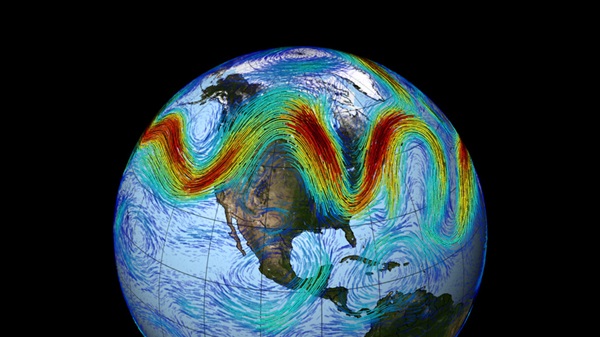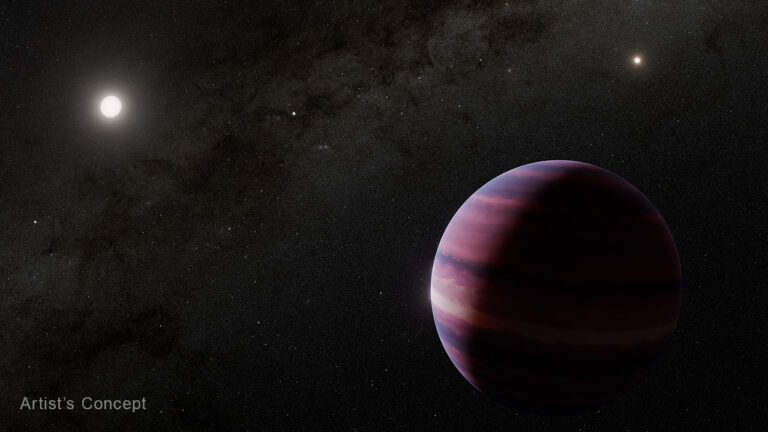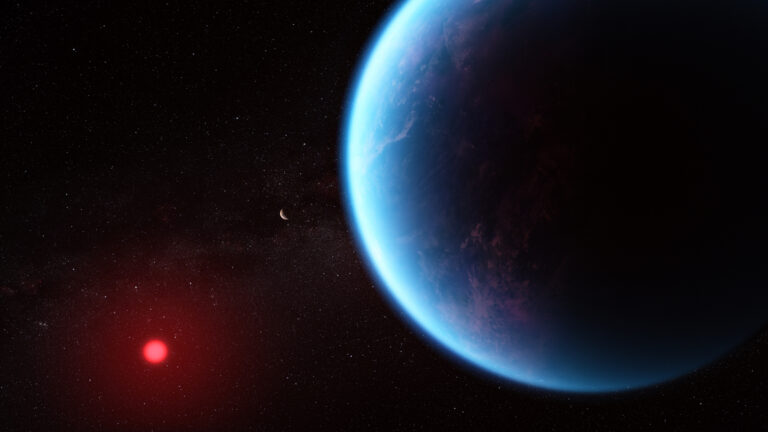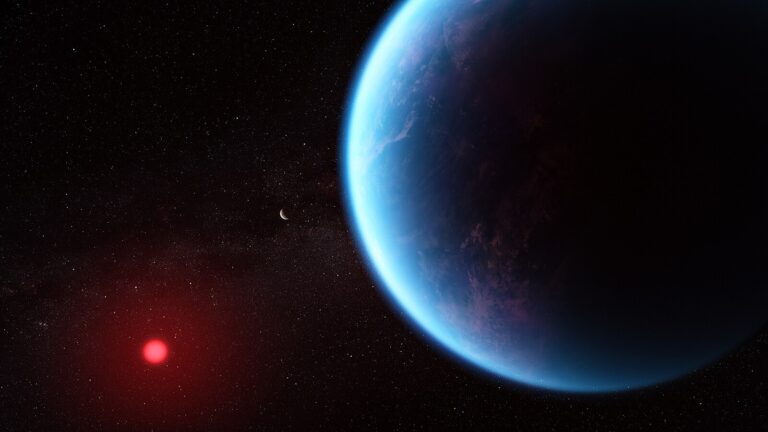Key Takeaways:
This is known as the Coriolis effect, and it influences atmospheric and ocean movements, namely winds and currents. Because forces cause the air to accelerate from a high to a lower pressure area, winds headed to a center of low pressure in the Northern Hemisphere deflect to the right and move around the low in a counterclockwise sense. Near a high-pressure area, outflowing winds deflect to become a clockwise flow. The opposite directions occur in the Southern Hemisphere.
Because the Coriolis parameter increases with increasing latitude, long waves — known as Rossby waves — can form in the atmosphere and ocean that slowly carry features for great distances. These can appear as meanders, such as those in the jet stream. Weather features are carried along these waves. And ocean currents deflect in a similar way.
Conversely, atmospheric and oceanic circulation variability can have a tiny but measureable effect on Earth’s rotation itself due to the conservation of angular momentum. For example, in the Northern Hemisphere winter, winds are much stronger than in summer. The decrease in global atmospheric angular momentum from northern winter to summer is compensated for by an increase in angular momentum in the solid Earth, accelerating its rotation rate. This shortens the day’s length very slightly, about a millisecond or less. Also, changes in irregular surface pressure patterns can cause slight wobbles on Earth, known as polar motion.
Atmospheric and
Environmental Research
Lexington, Massachusetts










